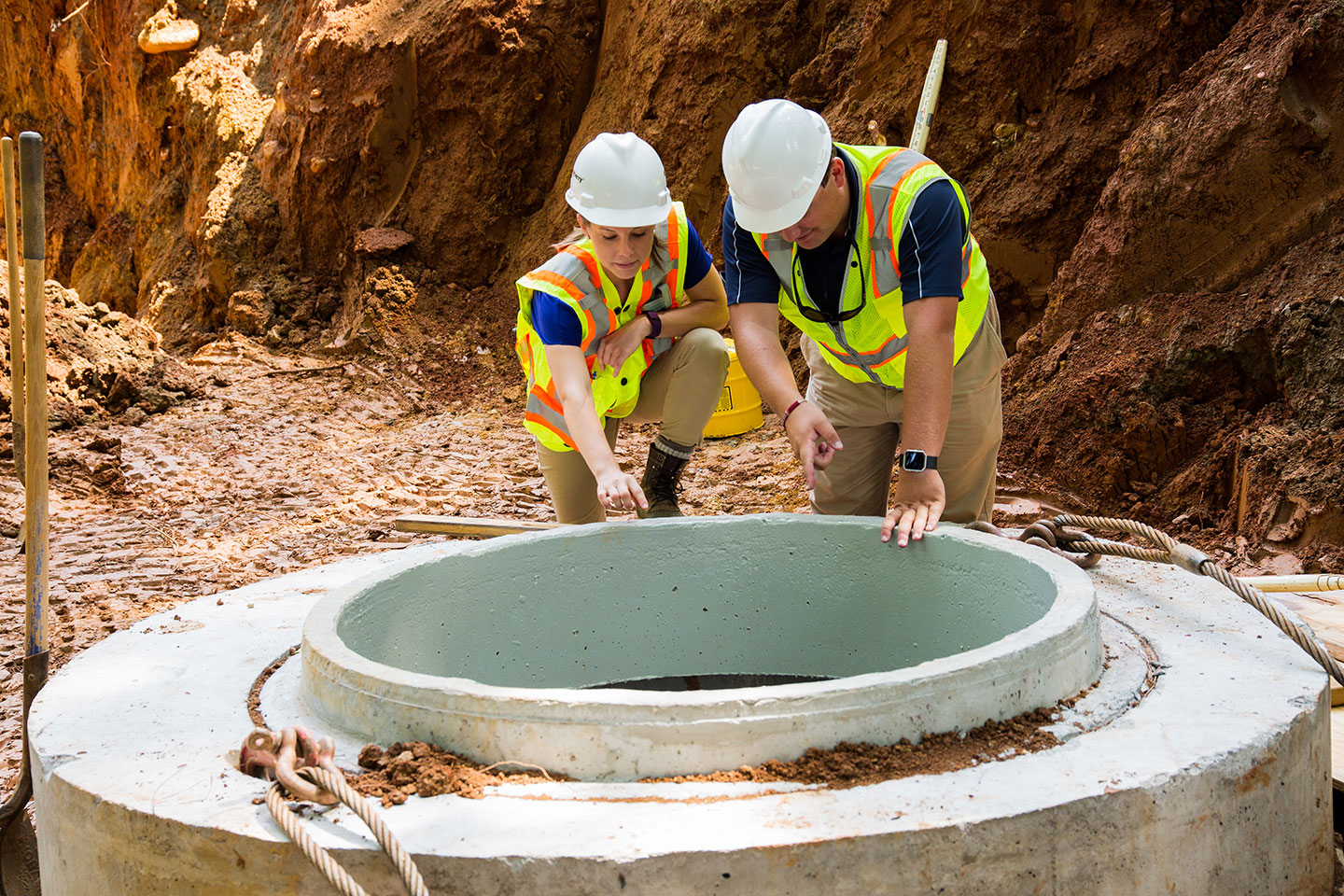Projects Will Enhance Public Health and Quality of Life
The Bipartisan Infrastructure Law (BIL) of 2021 provides the single largest investment in water infrastructure in the nation’s history. The legislation includes $55 billion for water/wastewater projects over five years. A significant portion of this funding will make its way to smaller, rural communities that must begin planning now to improve utility services for their customers.
Most of the BIL funds will be distributed through the Environmental Protection Agency’s (EPA) Drinking Water and Clean Water State Revolving Fund programs, administered by each state. In addition, $5 billion dollars has been allocated to the Small and Disadvantaged Communities grant program to address emerging contaminants.
Optimizing Funding Sources to Address Rural Challenges
Remote rural communities face unique challenges in trying to provide solutions to upgrade and expand water and wastewater systems. Often, the small customer base of these communities limits the ability to cover project costs through user rates that local homeowners and residents may not find affordable. Priorities often include historic or disadvantaged areas where failing residential septic systems or private wells can potentially lead to public health emergencies. While the overall scale of these projects is smaller, the same engineering challenges — such as wastewater collection and water distribution layouts, land acquisition, permitting, and treatment system design — are required to provide a holistic solution.
BIL funding will help address these rural water infrastructure needs largely through low-interest loans to utilities. Planning and design are also eligible expenses, so communities don’t need to have the projects ready for construction to qualify. Many communities may still need to seek additional funding assistance to offset debt incurred, factoring in the expense of long-term operations and maintenance as well. If projects involve emerging contaminants and drinking water lead pipe replacement, the BIL funds offer loan forgiveness provisions, no state match requirements, and set-asides for disadvantaged communities.

The “Rural Playbook:” Guiding Communities Through the Funding Process
In April 2022, the Bipartisan Infrastructure Law Rural Playbook was released, developed to guide state, local, tribal, and territorial governments in rural areas through the process of applying for the BIL federal investments. The Rural Playbook describes the steps to apply and identifies more than 100 programs funded under the law with federal cost-share flexibilities and matching requirement waivers.
The administration advises that public water authorities and other potential recipients start now to identify capital project priorities, engage stakeholders, and contact state program representatives to begin positioning projects for BIL funding. With estimates on needed water infrastructure investments in the U.S. ranging as high as $1 trillion over the next 20 years, it’s crucial that utilities in communities of all sizes prepare to move quickly to identify and deliver vital projects with the aid of the unprecedented boost in funding now available.

Advancing Environmental Justice in Rural Areas
Executive Order 14008, Tackling the Climate Crisis at Home and Abroad, tasks the federal government with advancing environmental justice and spurring economic opportunity for disadvantaged communities. Throughout the country, many states and localities are also taking the initiative to deliver much-needed projects to support underserved communities. Often, these projects involve creative engineering solutions to help address public health needs.
As one example, the historically African American community of Howardsville, Virginia, which dates to 1874, did not have sewage systems and instead relied on private septic systems and outhouses with limited indoor plumbing. Working with Loudoun County and Loudoun Water, we designed, permitted, and supported the construction of a new wastewater collection system and pump and haul tank for the four-acre, 15-parcel community that will eliminate existing septic systems, outhouses, and privy systems. Future improvements will include a packaged wastewater treatment system and drainfield, all designed to deliver a safe, reliable, and affordable system for this underserved community.